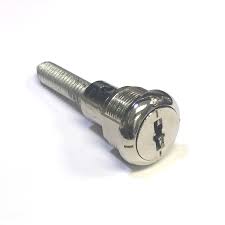One of the most frustrating experiences that you can have as a vending machine owner is the feeling that accompanies losing the key to one or more of your gumball machines. There is also the slightly less frustrating feeling of buying a used gumball or candy machine, at auction or a garage sale, without a key and realizing that you have no idea who manufactured the machine or where to start looking for a new key. As it so happens, only a small fraction of machines have any marks or logos on them to identify the manufacturer. To complicate the situation, there are no marks (even if you know who manufactured the machine) that reveal the specific key code for a particular lock and most manufacturers have multiple lock and key codes to help protect their machines. All of these circumstances are important because there are many different manufacturers out there of machines that look alike. Parts, locks and keys for these machines are often NOT interchangeable, even if the machine looks just like the one in a picture on our website.
The good news is that locks and keys across the gumball machine industry can be described according to a very few basic characteristics and even though there are different types of locks, they are pretty easy to classify if you know what those characteristics are. What still remains a mystery is then the key code specific to your lock. If you did not write down the key code in a safe place shortly after buying the machine, you will eventually regret it.
Instructions: How to Replace A Gumball Machine Lock and Key
Identify your Lock Type: The first thing to check when trying to decide what type of lock you have is what the purpose of the lock is, does your lock screw onto a center rod and hold the lid in place on your machine, or is it a lock for the cashbox drawer that only turns 90 degrees. This is a good place to start. Here is a picture of a common style of cash box lock.

Identify your Key Type: The second question is what type of key does your lock use, is it a flat key like that of a house key or is a cylinder key like one found on a bike lock. If the part of the key that goes into the lock looks like a circle, then it is a cylinder key. Both types are shown here:


Identify Your Lock Engagement: The third question is how does the lock engage with the machine. Some locks engage with the machine on 2 sides - meaning that the otherwise round lock body has two flat sides that keep it from rotating in the lid of the machine - while others engage on four sides - with four square bumps on the sides that fit into matching grooves in the lid of your gumball machine. Here is a picture of a cash box lock with two flat sides.
Identify your Lock: The other piece of information that can be useful if you have lost the key and cannot pull the lock out of the gumball machine to inspect it, is how the top of the lock looks while it is in the machine. Some locks sit flush with the lid and you can look into them and see the four pins that interact with the key, while others have a raised beveled surface that protrudes above the lid of the machine, these locks typically have 6 pins in them. Here is a picture of a lock with a beveled surface.
Once armed with this information on what type of lock you need for your gumball machine, it is much easier to research, find and order a compatible replacement lock and key for your gumball machines. Most lock and keys are sold as sets (1 lock and 1 key - mainly because that is the easiest way of keeping track of what key code matches a particular key) and so if you lose a key, you will probably end up with an extra lock as well. This can be a good way to standardize the key for your fleet of gumball machines or to just have a spare in case you over tighten the lock one time and break a pin.

